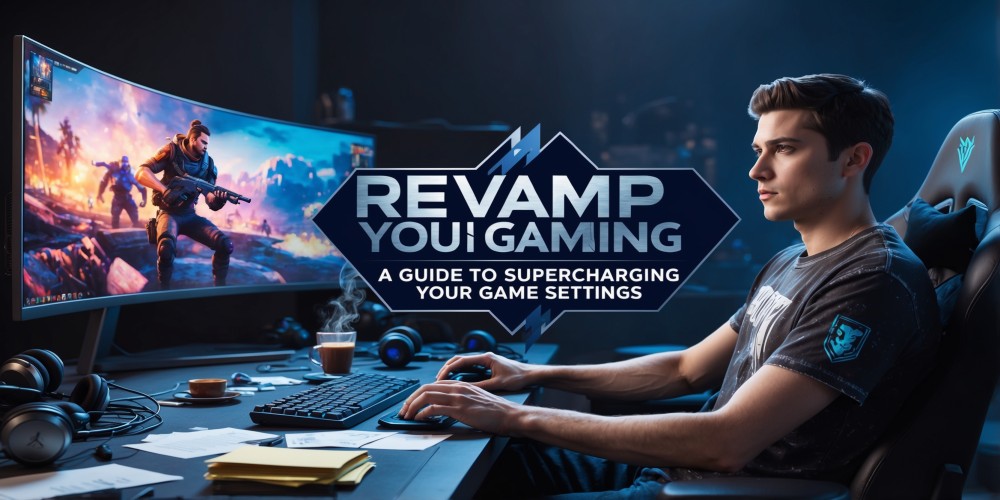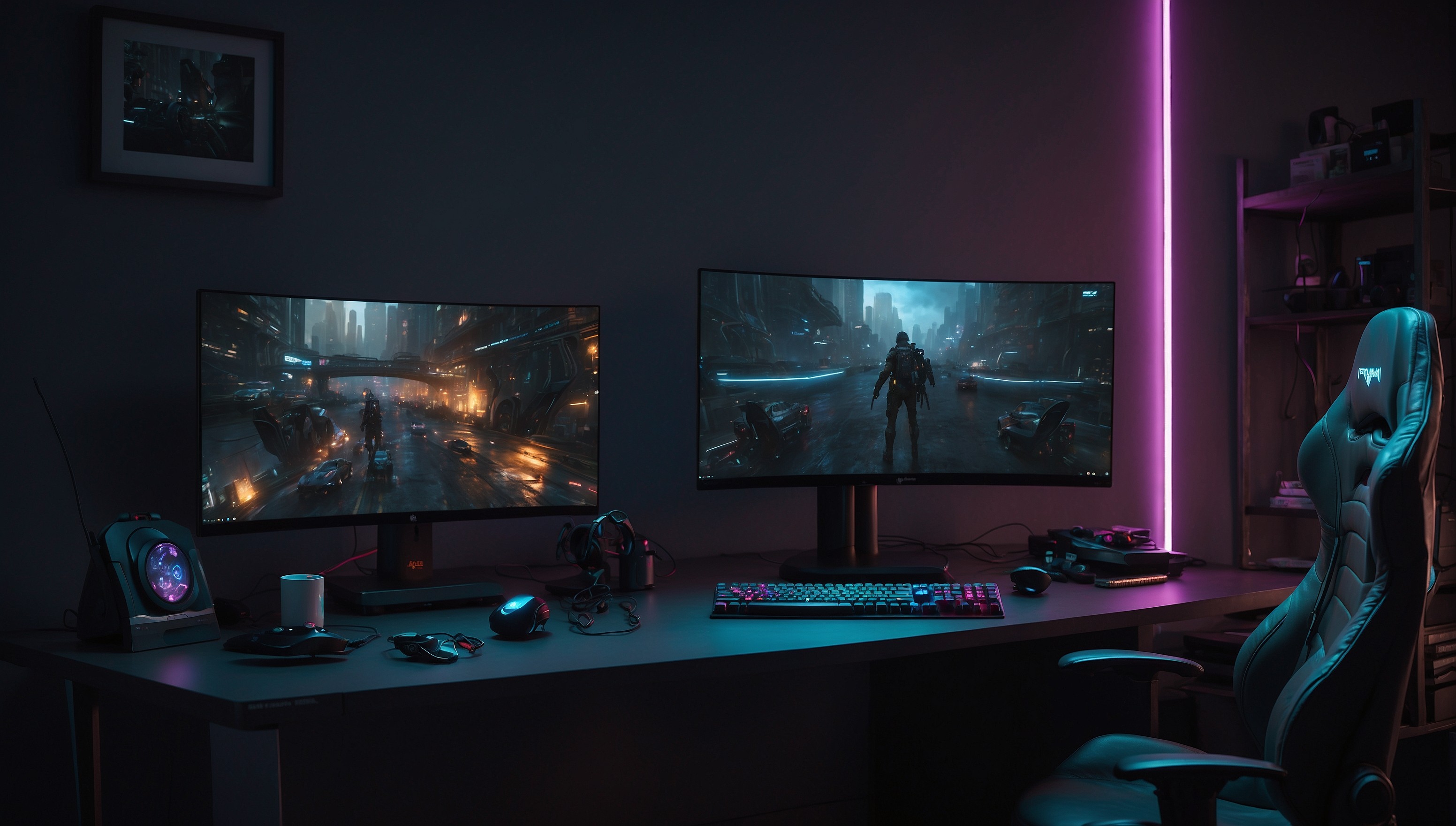10 Tips to Optimize Your Settings for Better Performance
Sep-11-2024

As any gamer knows, tweaking your settings can be the difference between a smooth-as-butter experience and a laggy mess. If you've ever found yourself in the heat of battle, only to get stuck with a sudden frame drop, you know how frustrating that can be. Well, don’t sweat it! Today, I’m here to guide you through 10 awesome tips to optimize your game settings for top-notch performance. Let's get right into it, and make sure you’re getting the best out of your rig!
1. Adjust Your Graphics Quality
It’s tempting to max out all the settings, but sometimes less is more. Lowering your graphics quality doesn’t mean turning your game into a retro pixelated throwback; it’s about finding a balance. Start with lowering shadows, post-processing, and anti-aliasing. Shadows might add some depth, but they can eat away at your frame rate like a hungry beast. Turn them down a notch, and you might just find your FPS soaring like an eagle. Tweaking these settings can save you precious frames and keep your gameplay as smooth as a well-oiled machine.
When adjusting textures, reflections, and effects, aim for a middle ground where the visuals look good without compromising too much on performance. High settings can make your game look gorgeous, but they can also turn your GPU into a furnace. It’s all about finding that sweet spot where you can enjoy both visuals and speed. Don't be afraid to experiment and see what works best for your system.
2. Update Your Graphics Drivers
If you haven’t updated your graphics drivers in a while, it’s like trying to win a race with an old, beat-up car. Head over to your GPU manufacturer’s website, grab the latest drivers, and install them. This small step can unlock optimizations that make your game run like a charm. Plus, new driver updates often bring specific improvements for the latest games—it's like giving your PC a little power-up.
Remember, keeping your drivers up to date isn’t just about performance; it’s also about stability. Newer drivers can fix bugs that might be causing crashes or stuttering. And if you’re playing a brand-new title, those drivers could contain game-specific tweaks that make everything run smoother. It’s like equipping your PC with the latest gear—essential for staying ahead in the game.
3. Use Game Mode in Windows

Windows has a hidden gem called Game Mode that helps prioritize gaming over background tasks. To turn it on, simply press Windows + G, then navigate to settings and enable Game Mode. This neat little trick reduces unnecessary background processes, freeing up resources to boost your gameplay. Think of it as putting your game in the fast lane.
Game Mode essentially stops Windows from running updates or notifications that could interrupt your play session. It’s like putting a 'Do Not Disturb' sign on your door during a marathon gaming session. This means your CPU and GPU can focus on delivering a smooth experience, letting you focus on your in-game objectives without any hiccups. It might sound simple, but this setting can make a world of difference.
4. Tweak Your In-Game Resolution
We all love those crispy visuals, but sometimes a lower resolution is the way to go. Dropping your resolution just a tad can lead to a huge boost in performance, especially if your hardware is struggling to keep up. Aim for a resolution that matches your monitor’s aspect ratio to avoid weird stretching. It’s like finding the sweet spot between looking good and feeling good.
Going from 4K to 1440p or 1080p might seem like a step down, but the performance gains can be massive. Your GPU won’t have to work as hard, resulting in a smoother frame rate and less heat. Plus, many games offer options like dynamic resolution scaling, which can adjust the resolution on the fly to maintain a stable FPS. This way,you can relish the unparalleled perks of two realms simultaneously without sacrificing too much visual fidelity.
5. Set Your FPS Limit
Unlimited frame rates can seem like a great idea, but they often result in your system running hotter than a summer’s day. Instead, set a reasonable FPS cap—like 60 or 144, depending on your monitor’s refresh rate. This prevents your system from working overtime and can smooth out those annoying spikes in frame rate. It’s all about staying cool, calm, and collected.
By capping your FPS, you allow your GPU to take a breather instead of pushing frames beyond what your monitor can display. It’s like pacing yourself during a long run—you don’t need to sprint the whole time. A stable frame rate means less tearing and stuttering, leading to a more consistent and enjoyable gaming experience. And if you’ve got a high refresh rate monitor, make sure to match that FPS cap to fully enjoy those buttery-smooth visuals.
6. Close Background Applications
When you're deep in a game, the last thing you want is some random app hogging your CPU. Before launching your game, make sure to close unnecessary programs running in the background. This could be that music player, extra browser tabs, or even that forgotten spreadsheet. Closing these apps can free up resources, making your game run as smoothly as a hot knife through butter.
It’s not just about closing apps either—check your startup programs too. Some applications like Discord or game launchers might be running in the background without you realizing it. A quick trip to your task manager can help identify these sneaky resource hogs. Streamlining your background tasks is like cleaning up your workspace before starting a big project—it helps everything run smoother.
7. Overclock Your GPU (Carefully!)
If you’re feeling adventurous, overclocking your GPU can give you that extra oomph. But be careful, it’s like giving your GPU a turbo boost—it’s powerful, but too much can lead to overheating. Use trusted software like MSI Afterburner, and increase your clock speed gradually while keeping an eye on your temperatures. It’s a bit of a balancing act, yet, it holds the potential to elevate your performance to uncharted heights.
Make sure to test your overclock with a stress test program to ensure stability. You don’t want your system crashing mid-game because you pushed your GPU too far. It’s like tuning up a car engine—go too far, and you risk overheating, but get it right, and you’ll be flying down the virtual roads.
8. Switch to Performance Mode in Power Settings
<img data-cke-saved-src="https://cdn.leonardo.ai/users/802d766d-ad65-4573-b9ed-469f22669451/generations/431a4e57-44ec-450a-9100-b9682bc48a83/Leonardo_Kino_XL_A_dimly_lit_modern_gaming_setup_with_a_highpe_0.jpg" src="https://cdn.leonardo.ai/users/802d766d-ad65-4573-b9ed-469f22669451/generations/431a4e57-44ec-450a-9100-b9682bc48a83/Leonardo_Kino_XL_A_dimly_lit_modern_gaming_setup_with_a_highpe_0.jpg" alt="A dimly lit, modern gaming setup with a high-performance gaming PC, surrounded by sleek, black gaming peripherals and accessories, set against a dark, gradient blue background that evokes a sense of intensity and focus, with a few subtle, neon accents highlighting the PC" s="" components,="" and="" a="" large,="" curved="" gaming="" monitor="" displaying="" captivating,="" futuristic="" game="" scene="" in="" vibrant,="" electric="" blues="" purples,="" with="" faint,="" atmospheric="" glow="" emanating="" from="" the="" screen,="" illuminating="" surrounding="" environment,="" few="" strategically="" placed,="" colorful="" cables="" wires="" adding="" touch="" of="" dynamism="" to="" overall="" composition.'="" width="100%" height="100%">
Sometimes, your PC's power plan might be set on a mode that conserves energy, but when gaming, you want all the power you can get. By switching your power plan to 'High Performance' or 'Ultimate Performance' (if available), you can ensure that your CPU and GPU are running at their peak capabilities. It’s like removing the speed limiter from your car—suddenly, you've got full throttle at your disposal.
This power plan maximizes your hardware’s performance by allowing it to use more energy. While it might increase power consumption, the boost in game performance is often worth it. Just be sure to switch back to a more energy-efficient plan when you’re not gaming to save on your electricity bill.
9. Defragment Your Hard Drive (If You’re Using HDD)
If you’re still running your games on a Hard Disk Drive (HDD), defragmenting it can help improve load times and overall system responsiveness. Fragmentation occurs when files get split up and spread out across the disk. Defragmenting helps by rearranging these files to make them more accessible, which speeds up read times.
Note that if you’re using a Solid State Drive (SSD), you should skip this step as defragmenting an SSD can actually shorten its lifespan. Instead, ensure that the firmware is up to date and that you’re using the TRIM command to maintain its efficiency. It’s like giving your drive a tune-up—it won’t need major changes, just some light maintenance.
10. Optimize Your Network Settings
Last but not least, don’t forget about your internet connection. Online gaming demands not just speed but stability. Start by ensuring your router is up to date and consider using a wired connection instead of WiFi for lower latency. Tweaking your network settings, like adjusting Quality of Service (QoS) to prioritize gaming packets, can also help reduce lag.
Additionally, avoid heavy downloading or streaming on the same network while gaming. It’s like making sure there are no leaks in your pipes—keeping the flow steady and uninterrupted. If you frequently encounter network issues, consider upgrading your plan or switching to a more reliable ISP to ensure a smoother gaming experience.
By following these tips, you should be able to squeeze every bit of performance out of your gaming setup and enhance your play experience. Remember, every system is unique, so what works for others may need tweaking for your setup. Happy gaming, and here’s to many lag-free sessions ahead!







